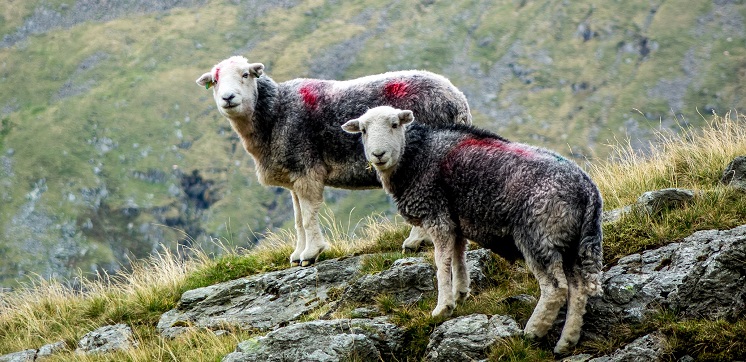
8 November 2021
Jasmine Holliday is the Lake District National Park Authority's new Assistant Farming Officer. She is excited to be working with farmers to develop projects for Farming in Protected Landscapes to ensure we tackle our ambitious carbon targets together. Here she tells us about her first three months in post.
It’s been great working with those who maintain our living, working landscape. What has inspired me most over the last couple of months is farmers eagerness to pioneer farming-led nature recovery on a journey towards net zero carbon.
A rainy morning spent walking through ancient woodland in the Duddon. An afternoon searching through cow poo for dung beetles in Great Langdale. A hot summer’s day spent watching sheep classes (and getting sunburnt) at the county show. These are just a few highlights from my introduction to this new role.

We are currently working with farmers through Farming in Protected Landscapes (FiPL), a grant programme that will fund projects under four themes: climate, nature, people and place.
Many Lake District farmers applying to Farming in Protected Landscapes hope to fund projects under the climate theme, 57 per cent of all expressions of interest we have received have a focus around climate and nature. Agriculture provides an opportunity to sequester (isolate or store) carbon out of the atmosphere on a large scale in grasslands, soils, woodland and so on. I have met numerous farmers hoping to plant trees and hedgerows to increase carbon storage, whilst simultaneously improving connectivity of habitats on farm. Many farmers I have met are already improving carbon storage in their soils, by implementing different management techniques. This includes, cutting inputs like fertilisers, minimising machinery operations, seeding multiple species or regeneratively grazing.
Many farmers are adapting to the effects of climate change, I have met farmers hoping to slow the effects of heavy rainfall in their valley, for example by filling in old drainage channels to reinstate wetlands, slowing the speed at which rainfall meets watercourses, to reduce the chance of flood. Farmers could also adapt to flooding by rewiggling rivers, slowing the flow of rivers to prevent flooding downstream.

Some farmers also hope to cut their carbon emissions through low carbon technologies for example slurry management equipment to help cut ammonia and methane emissions. Numerous organisations now provide carbon baselining tools for farms, measuring the impact of fuel use, feed, livestock, crops, building and so on. The outcomes of these studies can be used to identify equipment or activities that will reduce carbon emissions. Funding could be sought through Farming in Protected Landscapes for carbon baselining and other forms of advice that will enable farmers to reduce emissions.

We have seen many FiPL proposals that will indirectly cut carbon emissions. For example traditional barn restoration works, using local supplies and contractors to minimise embodied carbon. Many projects will reduce the carbon emissions of the wider community, like place-based products that are grown, processed and marketed locally to reduce mileage and promote a more circular economy. Some farmers even hope to reduce the carbon footprint of our visitors, creating opportunities for visitors to stay on farms, linking them to activities in the local areas, to reduce the use of cars during their holidays.
One thing is for sure, farmers are not short of ideas.